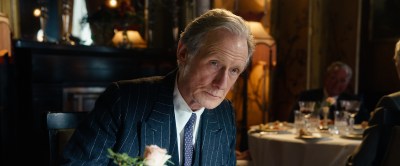
The main motivation for our recent trip through south Georgia and Alabama was to visit civil rights sites. To that end, we spent four nights in Montgomery, Alabama, which has them in thought-provoking, overwhelming abundance. The photo is of the marker for Martin Luther King’s church, with the Alabama State capitol only blocks away and visible on the right.
First, we drove an hour west to Selma, to see the Edmund Pettus Bridge, site of the “Bloody Sunday” voting rights march in 1965 that focused national attention on the civil rights cause. There were three attempts at a Selma to Montgomery march. The first ended with Bloody Sunday when marchers, including the young to-be congressman John Lewis, were attacked with billy clubs, whips, and tear gas. Many were injured. Two days later, Dr. Martin Luther King led several thousand protesters back to the bridge. They crossed it then turned around to return to their starting point. It was a symbolic gesture of their determination, as well as a necessity, given a court order prohibiting the march.

Two weeks later, the march was allowed to proceed to Montgomery, with ample protection from military police and US Army troops. Some 25,000 people joined for the last stretch into the city and the Alabama State Capitol. Three months later, Congress passed the Voting Rights Act of 1965 (a law Supreme Court Chief Justice John Roberts has dedicated his career to dismantling).
As of this writing, the Lowndes Interpretive Center, located on US Hwy 80, the route of the march, is temporarily closed due to a water main break, but should reopen soon and be well worth a visit. The National Park Service also maintains a small but powerful National Voting Rights Museum on the Selma side of the Pettus Bridge.
Several days are needed to properly take in the civil rights sites in Montgomery itself. We started with a visit to The Legacy Museum, a project of Bryan Stevenson’s Equal Justice Initiative. (If, in the unlikely event you are not familiar with this profound thinker about US race relations, start here.)
When you enter the museum, you find yourself in a large space dominated by the sight and sounds of the sea, whose overpowering waves were filmed at surface level. It’s a dramatic and creative opening. It certainly put me in mind of the terrifying experience of Africans wrested from their homes for a perilous journey across a wild ocean. Throughout the museum, the curation is remarkable, from the recreation of the transatlantic slave trade to the domestic slave trade, to the Civil War and Reconstruction, and the push for Civil Rights. The museum employs many compelling ways to tell these complex stories.

A second powerful EJI project is the National Memorial for Peace and Justice, which opened in 2018. In words and sculpture, it commemorates the lives of African Americans who were victims of racial terror lynchings, in order to more truthfully and completely reflect the nation’s history. Each of the more than 800 hanging steel monuments represents a county in the United States where a racial terror lynching took place. Each bears the names of the victims.The accompanying photo is the monument for McLennan County, Texas, whose county seat is Waco, where my mother was born in 1908. My grandparents and great-grandparents lived in the county during the years when many of these lynchings took place. These events had to be known to them and their children, but the family never spoke of them, at least not in my presence. That’s one reason the Memorial is so vital, to connect us to this past.
While some white Americans oppose exhibits like these, because they believe the experience will make children (and, possibly, themselves) “feel bad about themselves,” I believe the opposite should be true. By not hiding the past, we can see it more clearly and avoid being stuck in its destructive attitudes and behavior. We can see how ideas about right and wrong have evolved, acknowledge how far we have come and the importance of honoring and preserving those gains. At the same time, we can recognize the work that still needs to be done. Deliberate ignorance of the past only perpetuates wrongs.

We visited the Dexter Avenue Memorial Baptist Church, Dr. Martin Luther King’s home church in Montgomery, as well as the Parsonage Museum on South Jackson Street, where the King Family lived from 1954-1960, and which was bombed several times.
The tour of the house let us walk the floors Martin and Coretta walked, see the rooms they saw. We were fortunate to have as our tour guide the granddaughter of R.D. Nesbitt, deacon of the church and chairman of the pulpit selection committee, and he recruited Dr. King to Montgomery. She knew everyone in every photograph! Nesbitt said, King’s “major strength, in my opinion, was his ability to get along with people.”
The Rosa Parks Museum, part of Troy University, includes a nice recreation of the famous bus ride in which she refused to give up her seat for a white person. This led to the 13-month Montgomery bus boycott, a key event in ending segregation.

Also in this Georgia-Alabama travel tips series:
Brushes with Literary Fame (Lee, Capote, O’Connor, and more)
“Bloom Where You’re Planted” (US Presidents in rural Georgia)


















